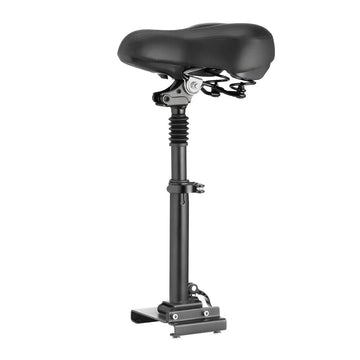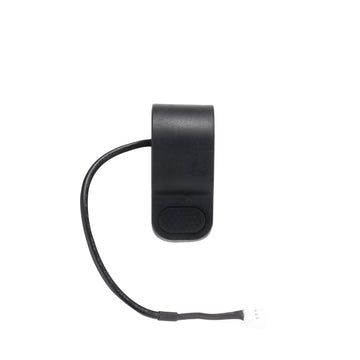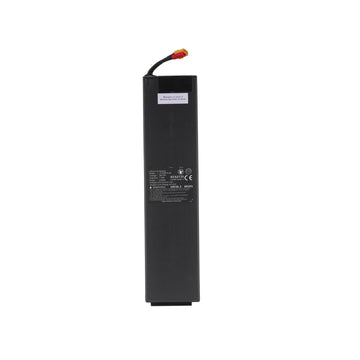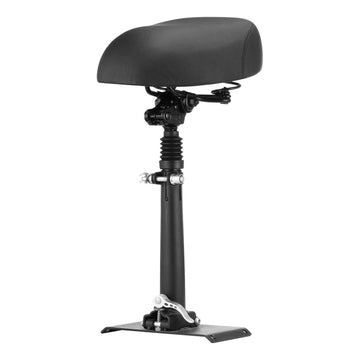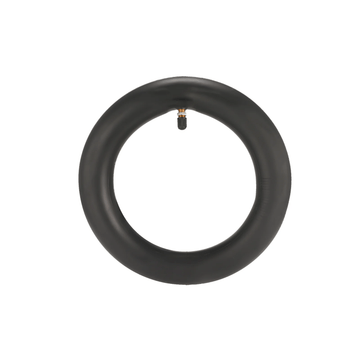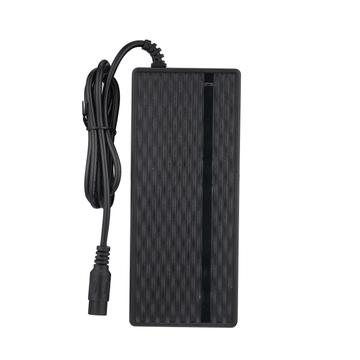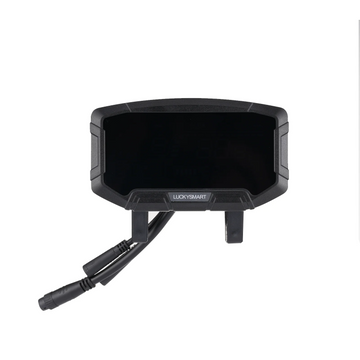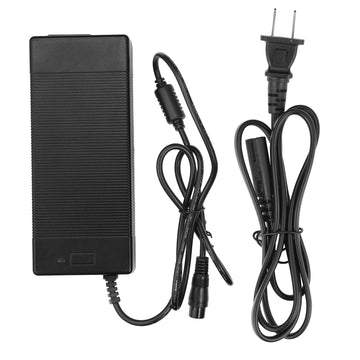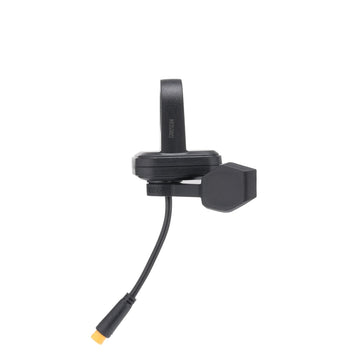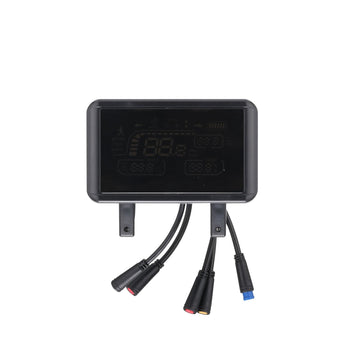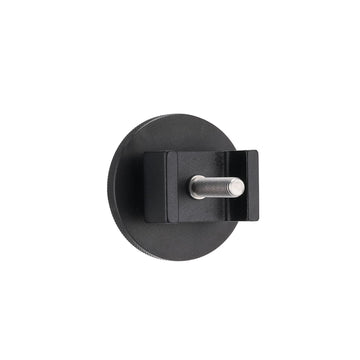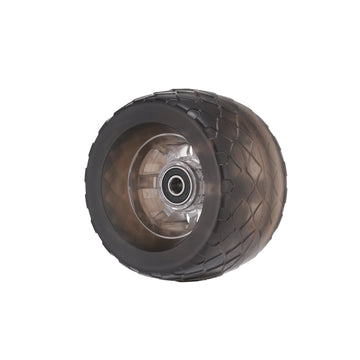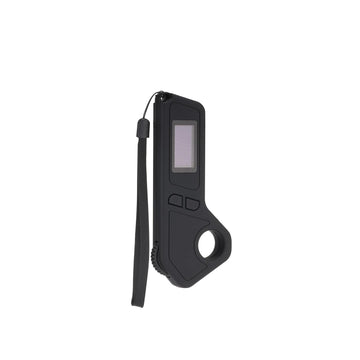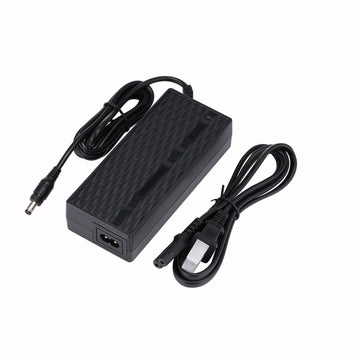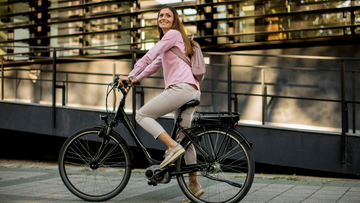
Choosing between a kick scooter and an electric scooter represents more than just a simple transportation decision. It's about balancing your lifestyle needs, budget considerations, and personal preferences. While kick scooters offer simplicity and built-in exercise benefits, electric scooters deliver speed and effortless commuting potential. Making the wrong choice could cost you both money and satisfaction in the long run.
Let's explore the key differences between kick scooters and electric scooters to help you determine which option truly aligns with your transportation needs.
Core Differences Between Kick Scooters and Electric Scooters
Propulsion Method
Kick scooters require physical effort to move, with riders pushing off the ground with one foot to generate momentum. Electric scooters feature motors that do all the work when you press a throttle.
Power Source
- Kick scooters: Human-powered
- Electric scooters: Battery-powered motors (typically 250-500W)
Speed Capabilities
The speed difference is substantial. Kick scooters typically reach 5-10 mph depending on the rider's strength and terrain. Electric scooters can achieve speeds of 15-30 mph based on their motor power and design.
Weight and Portability
|
Type |
Average Weight |
Portability |
|
Kick |
6-12 lbs |
Highly portable, easy to fold |
|
Electric |
25-40 lbs |
Heavier, sometimes bulkier |
Typical Users
Adults often choose electric scooters for commuting to work or running errands, where the motor helps them travel longer distances without fatigue. Children and teens typically use kick scooters for recreational purposes and short neighborhood trips.
Cost Considerations
Budget plays a significant role in the decision process. Kick scooters range from $30-$200, making them more accessible for many consumers. Electric scooters command higher prices between $200-$1,500 depending on features, quality, and performance capabilities.
Maintenance Requirements
The maintenance needs differ significantly between the two options. Kick scooters require minimal upkeep—occasionally tightening bolts or replacing wheels. Electric scooters demand regular battery charging, electrical system checks, and more complex mechanical maintenance.
Design and Construction Comparison
Frame Structure
Kick scooters feature lighter, simpler frames typically weighing between 6-12 pounds. They're commonly made from aluminum, steel, or carbon fiber, with direct connections between the frame and handlebars without extra components.
Electric scooters are substantially heavier (20-40 pounds) due to their motors, batteries, and electrical systems. They utilize sturdier materials to support these additional components, with most frames constructed from reinforced aluminum with strengthened joints.
|
Feature |
Kick Scooter |
Electric Scooter |
|
Weight |
6-12 lbs |
20-40+ lbs |
|
Materials |
Aluminum, steel, carbon fiber |
Reinforced aluminum, steel |
|
Complexity |
Simple, minimal parts |
Complex with electrical systems |
Handlebar Design
Kick scooters feature straightforward handlebars with basic grips, occasionally including bells or simple brake mechanisms. Electric scooters incorporate throttle controls, digital displays, and brake levers into more complex handlebar systems.
Deck Construction
The platforms differ considerably between types. Kick scooters have thinner, lightweight decks, while electric models require wider, sturdier platforms to accommodate batteries and support higher speeds and weights.
Wheel Configuration
Wheel design varies significantly between the two scooter types. Kick scooters typically utilize 100-200mm polyurethane wheels, while electric models feature 8-10 inch air-filled or solid rubber tires that provide better shock absorption and stability at higher speeds.
Folding Mechanisms
Both scooter types incorporate folding mechanisms, but for different purposes. On kick scooters, folding primarily facilitates easy storage. For electric models, folding mechanisms help with transportation between rides due to their substantially heavier weight.
Weather Resistance
Electric scooters generally offer better weather protection, with many models rated IP54 or higher to safeguard their electrical components from water and dust exposure.
Performance Metrics Face-Off
Traditional kick scooters reach speeds of 5-10 mph depending on rider effort, while electric scooters can achieve 15-20 mph for consumer models, with premium versions capable of 25+ mph.
Electric scooters provide instant acceleration with the push of a button, delivering immediate torque. Kick scooters require physical effort to build momentum, creating distinctly different riding experiences and control characteristics.
Range Comparison
|
Scooter Type |
Typical Range |
Limiting Factor |
|
Kick |
Unlimited |
User stamina |
|
Electric |
10-40 miles |
Battery capacity |
Braking Systems
Kick scooters typically employ foot brakes or simple hand brakes. Electric models feature more sophisticated braking mechanisms, including regenerative brakes, disc brakes, or drum brakes for consistent stopping power at higher speeds.
Hill Performance
Electric scooters handle inclines far better thanks to their motor assistance. Most quality electric models can manage slopes of 10-15%, while kick scooters struggle with anything beyond mild inclines without significant rider effort.
Weather Considerations
Weather impacts both scooter types, but electric models face additional concerns. Rain can potentially damage electrical components, while extreme temperatures may affect battery performance and range.
Terrain Adaptability
Electric scooters with pneumatic tires and suspension systems handle varied terrain more effectively. These features allow for comfortable riding on rough surfaces that would challenge traditional kick scooters with solid wheels.
For those seeking adventure beyond city streets, our off-road electric scooters offer the perfect combination of power and durability to tackle challenging terrain.
Rider Experience Factors
Kick scooters and electric scooters deliver fundamentally different riding experiences. Kick scooters provide a workout, with riders burning 300-500 calories per hour, making them excellent for exercise during commuting.
Electric scooters offer an effortless ride with minimal physical exertion. Riders simply stand and steer, making them accessible for people with various fitness levels and physical abilities.
Comfort Comparison
|
Feature |
Kick Scooter |
Electric Scooter |
|
Vibration |
More noticeable |
Often dampened |
|
Standing time |
More tiring |
Less fatiguing |
|
Ride smoothness |
Surface-dependent |
Generally smoother |
Learning Curve
The learning curve varies significantly between scooter types. Most people master basic kick scooter riding within 1-2 hours. Electric scooters require additional time to learn throttle control, braking systems, and handling at higher speeds.
Physical Benefits
Both scooter types develop balance and coordination. Kick scooters particularly enhance leg strength and cardiovascular endurance through their active propulsion requirements.
Safety Considerations
Safety concerns differ between the two options. Electric scooters reach higher speeds (15-20 mph), which increases injury risk. Helmets are essential for both types, while protective gear like knee and elbow pads is highly recommended, especially for electric scooter riders.
Visibility Factors
Electric scooters typically include built-in lights for night riding. Kick scooters usually require adding aftermarket lights for safety after dark, an important consideration for commuters who ride in low-light conditions.
Looking for a safe and enjoyable option for the younger riders in your family? Explore our collection of kid-friendly scooters designed with safety and fun in mind.
Practical Ownership Considerations
Cost Analysis
|
Scooter Type |
Price Range |
|
Kick Scooter |
$30-$300 |
|
Electric Scooter |
$300-$2,000+ |
Kick scooters have virtually zero operational costs beyond occasional maintenance. Electric scooters require electricity (approximately $0.05 per charge) and potential battery replacements ($150-$300) every 2-3 years.
Storage Requirements
Storage needs differ significantly between these options. Kick scooters typically weigh 7-12 pounds and fold to compact dimensions that fit under desks or in closets. Electric scooters are bulkier, weighing 25-50+ pounds, making them challenging to carry upstairs or store in limited spaces.
Maintenance Requirements
- Kick scooters: Occasional wheel bearing maintenance, brake adjustments
- Electric scooters: Battery care, motor checks, electronic troubleshooting, tire maintenance
Longevity Expectations
Well-maintained kick scooters typically last 3-5+ years with minimal care. Electric scooters generally serve 2-4 years before major components like batteries need replacement, adding to their lifetime ownership cost.
Wondering about the legal aspects of electric scooter ownership? Learn about which scooters don't require a license in NY to ensure you're riding within regulations.
Environmental and Social Impact
Electric scooters produce zero direct emissions during use, but their environmental footprint includes battery production and electricity generation impacts. Kick scooters have no operational emissions and require significantly fewer resources to manufacture.
The manufacturing process for electric scooters generates approximately 126-262 kg of CO2, while kick scooters produce only 20-40 kg—a substantial difference when considering their overall environmental impact.
Typical electric scooters in shared fleets last 1-2 years but can reach 3-5 years with proper maintenance when privately owned. Kick scooters often last 5-10 years with minimal replacement parts, representing a more sustainable option from a product lifecycle perspective.
Noise Pollution
Electric scooters generate noise ranging from 60-70 decibels during operation, similar to normal conversation. Kick scooters produce minimal noise, typically under 40 decibels, making them less disruptive in urban environments.
Regulatory Landscape
Many cities have implemented specific regulations for electric scooters. Some require permits, impose speed limits, or restrict parking locations.
Regional Regulations Comparison
|
Region |
Kick Scooter Rules |
Electric Scooter Rules |
|
US |
Generally allowed on sidewalks |
Often banned from sidewalks, speed limits vary by city |
|
EU |
Sidewalk use common |
Maximum speed 25 km/h, often restricted to bike lanes |
|
UK |
Legal on sidewalks |
Only legal on private land or designated areas |
Age restrictions typically require riders to be 16+ for electric scooters, while kick scooters have fewer age-based limitations.
Wondering about the legal aspects of electric scooter ownership? Learn about which scooters don't require a license in NY to ensure you're riding within regulations.
Making Your Decision: Which Scooter Type Is Right For You?
Choosing between a kick scooter and an electric scooter depends on several key factors including your primary transportation purpose, budget constraints, and physical capabilities.
Purpose Assessment
- Commuting: Electric scooters excel for longer distances (2+ miles)
- Recreation: Kick scooters provide exercise and fun
- Portability: Kick scooters are typically lighter and easier to carry
Transportation needs vary widely among individuals. Someone traveling several miles daily might benefit from an electric model, while a person seeking exercise might prefer a manual kick scooter.
Budget Considerations
|
Scooter Type |
Price Range |
Ongoing Costs |
|
Kick Scooter |
$30-$300 |
Minimal maintenance |
|
Electric Scooter |
$300-$1,200+ |
Battery replacement, electricity |
Physical Considerations
Riders with limited stamina or mobility challenges may find electric scooters more accessible, while those seeking exercise will benefit from kick scooters' physical requirements.
Storage Limitations
Available storage space can significantly influence your decision. Electric scooters generally require more room, while kick scooters can fit in tight spaces like under desks or in small closets.
Many riders discover that their ideal solution evolves with changing needs. Some people own both types, using electric scooters for commuting and kick scooters for recreation or short trips.
Testing both options before purchasing provides valuable insights into which model better suits your specific requirements. Many cities now offer scooter-sharing programs that allow riders to experience both types before investing.
Final Thoughts
The choice between kick scooters and electric scooters ultimately depends on your specific needs and priorities. Kick scooters offer simplicity, affordability, and fitness benefits, while electric scooters provide convenience, speed, and extended range.
Your ideal selection will depend on factors like commute distance, budget constraints, and whether you prioritize physical exercise or effortless travel. Both options represent environmentally friendly alternatives to cars, though appropriate safety gear remains essential regardless of your choice.
Ready to explore more eco-friendly transportation options? Check out our guide to the best electric bikes for teens.
Frequently Asked Questions
What are the advantages and disadvantages of kick scooters compared to electric scooters?
Kick scooters offer several advantages including lower cost, lighter weight, and no need for charging while providing built-in exercise. The main disadvantages include requiring physical effort, especially on hills and longer distances. They're typically slower than electric scooters, with maximum speeds usually around 10 mph versus 15-20 mph for electric models. Kick scooters work well for short trips but become impractical for longer commutes where electric scooters excel.
Can adults benefit from using kick scooters, and how do they compare to electric scooters for this age group?
Adults definitely benefit from kick scooters as they provide excellent low-impact exercise that strengthens leg muscles and improves cardiovascular health. Many adults choose kick scooters for short commutes under a mile where setting up and charging an electric scooter might not be worth the effort. Modern adult kick scooters feature larger wheels and sturdier frames than children's models, though electric scooters may better serve adults with longer commutes or those who don't want to arrive at work sweaty.
What is the typical cost difference between a kick scooter and an electric scooter?
Kick scooters typically range from $30-$300 depending on quality and features, with premium models occupying the higher end of this range. Electric scooters generally start around $300 for basic models and can exceed $1,500 for premium versions with longer range and advanced features. The average price point for a reliable electric scooter is approximately $500-$700, making kick scooters significantly more accessible as entry-level transportation options.
Is it possible to use an electric scooter in the same way as a kick scooter when power is not being used?
Most electric scooters can be kicked manually when the battery dies, but the added weight (typically 25-40 pounds) makes them much harder to propel than standard kick scooters. Some hybrid models are designed specifically to function well in both powered and manual modes, though they typically cost more than regular kick scooters. The motor and battery placement can create drag even when not powered, requiring more effort than a traditional kick scooter.
























